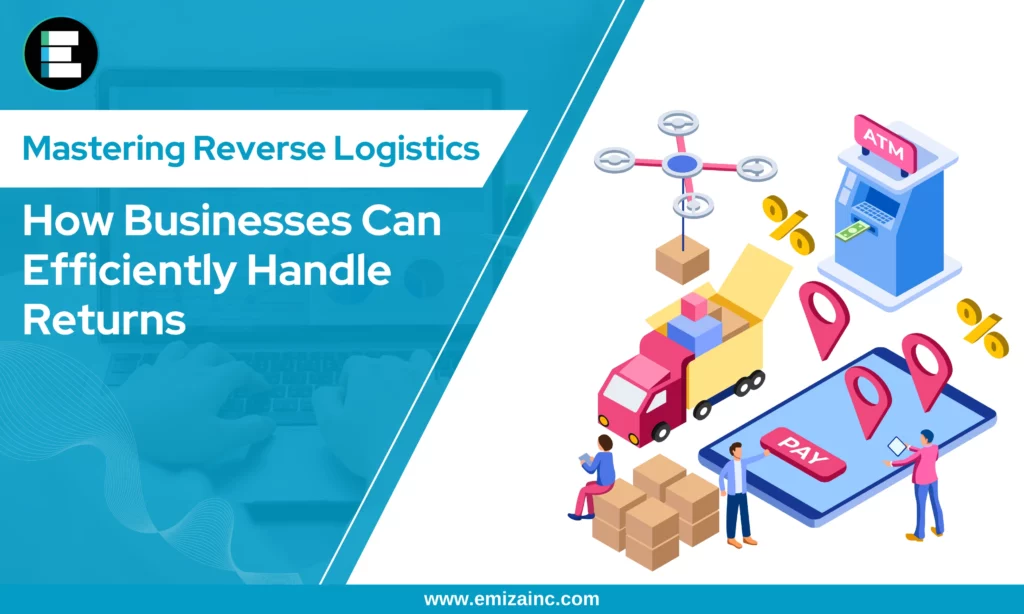Reverse logistics, the process of managing product returns is an essential aspect of modern business operations. As the e-commerce industry continues to grow, businesses must develop effective strategies to handle returns efficiently. In this blog, we will explore the challenges and opportunities of reverse logistics and provide insights into how businesses can master this crucial aspect of their supply chain. By implementing best practices and leveraging technology, companies can not only streamline the returns process but also turn it into a competitive advantage.
Understanding Reverse Logistics
Reverse logistics encompasses the activities involved in handling returned products, including receiving, inspecting, processing, refurbishing, and redistributing or disposing of them. Unlike forward logistics, which focuses on moving products from the manufacturer to the end customer, reverse logistics involves the flow of goods in the opposite direction.
Challenges in Reverse Logistics
Managing returns presents several challenges for businesses. These include determining the reason for the return, ensuring proper documentation, assessing product condition, handling customer refunds or replacements, and minimising costs associated with reverse logistics. Additionally, managing returns within specified time frames is crucial to maintain customer satisfaction.
Efficient Returns Handling Strategies
Streamline the Returns Process: Implement a clear and user-friendly returns policy that provides customers with easy-to-follow instructions. Simplify the returns request process through online portals or automated systems to minimise customer effort and improve satisfaction.
Optimise Product Inspection and Assessment: Establish efficient protocols for inspecting returned products to determine their condition and identify potential issues. Categories are returned based on their condition to streamline decision-making and allocate resources effectively.
Implement Reverse Logistics Technology: Leverage technology solutions such as barcode scanning, RFID (radio frequency identification) tagging, and inventory management systems to track returned products accurately. This enables real-time visibility, streamlines processing, and facilitates data analysis for process improvement.
Embrace Automation and Robotics: Automate repetitive tasks in the returns process, such as sorting, repackaging, and labelling, using robotics and automation technologies. This reduces manual labour, minimises errors, and speeds up processing times.
Develop Partnerships with Service Providers: Collaborate with third-party logistics providers or specialised reverse logistics partners to leverage their expertise and infrastructure. This allows businesses to outsource certain aspects of the returns process, improving efficiency and reducing costs.
Leverage Data Analytics: Utilise data analytics to gain insights into return trends, reasons for returns, and product quality issues. This information helps identify root causes, optimise product design, improve customer satisfaction, and reduce return rates.
Implement Sustainable Practices: Embrace environmentally friendly practices in reverse logistics, such as refurbishing, recycling, or repurposing returned products. This not only reduces waste and supports sustainability goals but can also provide cost savings and positive brand perception.
Benefits of Efficient Reverse Logistics:
Mastering reverse logistics offers numerous benefits to businesses, including:
Enhanced Customer Experience: An efficient returns process improves customer satisfaction and builds trust, leading to increased loyalty and repeat purchases.
Cost Savings: Optimised reverse logistics reduces processing time, minimises inventory holding costs, and enables better allocation of resources, resulting in overall cost savings.
Improved Product Quality: Analysing returned products helps identify product defects, allowing businesses to address quality issues promptly and improve future product iterations.
Competitive Advantage: By providing hassle-free returns and exceptional customer service, businesses differentiate themselves from competitors and attract more customers.
Sustainability and Corporate Social Responsibility: Implementing sustainable practices in reverse logistics aligns with environmental goals and enhances a company’s reputation as a socially responsible organisation.
Emiza’s Reverse Logistics
Emiza offers a comprehensive set of solutions to efficiently handle returns for businesses, streamlining the entire process from start to finish.
- Our shipping solutions are designed to seamlessly connect your sales channels to shipping automation, eliminating the time-consuming tasks involved in arranging logistics.
- By integrating with shipping partners, we ensure error-free shipping, saving you valuable time and effort.
- Our platform also facilitates reverse shipping, simplifying the return process for customers and enabling businesses to swiftly process returns and refunds.
- With Emiza, fast fulfilment becomes a reality as we prioritise shipping partners based on their efficiency and reliability.
- Furthermore, our accurate order tracking system allows you to keep a close eye on every shipment, ensuring transparency and customer satisfaction.
With Emiza, businesses can efficiently handle returns, reduce costs, and provide a seamless experience for both customers and stakeholders.
Conclusion:
Efficiently managing returns is essential for modern businesses. By implementing streamlined processes, leveraging technology, and embracing sustainable practices, companies can turn reverse logistics into a competitive advantage. Prioritising customer satisfaction, cost savings, and data-driven decision-making enables businesses to enhance the overall supply chain and build stronger relationships with customers. With a comprehensive approach to reverse logistics, companies can master this vital aspect of their operations and achieve long-term success in the dynamic marketplace. Want to grow your business by mastering reverse logisticS? Emiza is your trusted No.1 partner. Visit www.emizainc.com.

